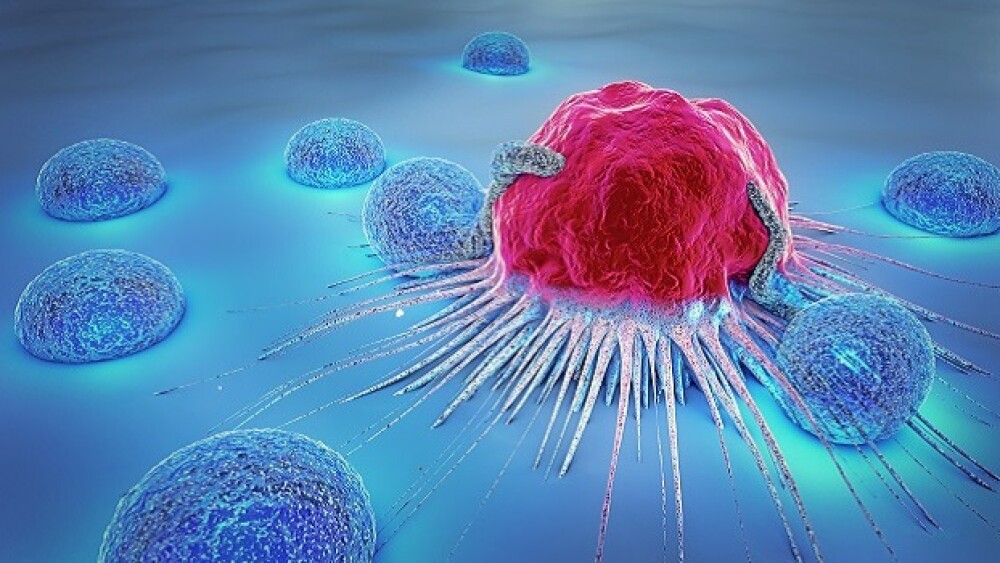The uses of viruses as therapeutics is growing, largely because new gene therapy treatments require viruses.
The uses of viruses as therapeutics is growing, largely because new gene therapy treatments require viruses—typically adeno-associated virus (AAV) as a vector for delivering the modified gene into the patient’s body. For example, Spark Therapeutics and Pfizer’s SPK-9001 to treat hemophilia B uses AAV to deliver a human factor IX variant into cells, allowing them to produce the factor IX. It is currently in Phase III clinical trials.
But another use of viruses as therapy is being evaluated as well. So far, there has only been one such product, Amgen’s Imlygic (talimogene laherparepvec), which was approved by the U.S. Food and Drug Administration (FDA) to treat unresectable cutaneous, subcutaneous and nodal lesions in patients with melanoma recurrent after initial surgery in 2015. Imlygic is a genetically modified herpes simplex virus type 1 that replicates within tumors and creates a protein that stimulates the immune system to attack the tumors.
These are called oncolytic viruses, and with a combination of advances in immuno-oncology and techniques like CRISPR gene editing, may be a promising new type of immuno-oncology treatment.
Juan Fueyo, with the Department of Neuro-Oncology at the MD Anderson Cancer Center in Houston, told Victoria Forster, a post-doctoral researcher at The Hospital for Sick Children in Toronto, writing for Forbes, “When we designed oncolytic viruses, we didn’t originally think it was immunotherapy. It’s the immune system that is actually orchestrating the destruction of the tumor and our current hypothesis is that this (not the virus itself) is the main mechanism of treatment.”
Fueyo recently led a Phase I clinical a trial of DNX-2401 (tasadenoturev) in glioma, a type of brain tumor, which had positive results. In the trial, 37 patients, including 28 with glioblastoma, received tasadenoturev. Five patients survived longer than three years after treatment. One patient survived 4.5 years and was still alive as of February 2018.
Forster notes, “These may seem like fairly sobering survival statistics when compared to more treatable cancers, but for this type of aggressive brain tumor, this is notable progress. In Fueyo’s trial, those who did respond to the therapy achieved survival times in excess of the expected and a superior quality of life on treatment, however, almost all of the patients finally succumbed to their disease.”
The likely reason for that is a small percentage of cancer cells are probably resistant to the therapy—just like they are for traditional chemotherapy. One seeming advantage, however, is fewer side effects than is typically seen with invasive surgeries, radiotherapy and chemotherapies.
Researchers are working with a variety of viruses, including Polio and Zika for brain tumors, adenoviruses for pancreatic cancer, and measles virus for ovarian cancer and leukemia.
Vueyo is cautious, however. “All of this hype saying all viruses can be modified—I don’t believe that. I think we will end up using three or four types of virus, ultimately. In some clinical trials with viruses, patients have died. We need to study this carefully and figure out which are toxic. Viruses are dangerous. They are dirty bombs which of course we try to control, but they can behave in an unregulated way. We must be careful.”
In addition to academic research centers, companies such as Pfizer, Celgene and Bristol-Myers Squibb have their own oncolytic programs. Pfizer and Western Oncolytics inked a development deal in 2016 for oncolytic vaccinia virus, WO-12. Also in 2016, Celgene invested in Oncorus to use next-gen oncolytic viruses to treat glioblastoma multiforme (GBM). Bristol-Myers Squibb signed an exclusive worldwide license with PosiOxus Therapeutics in 2016 for NG-348 to develop the oncolytic virus for solid tumors.
Phil Daschner, program director of the National Cancer Institute (NCI)’s Cancer Immunology, Hematology and Etiology department, told Forster, “The potential for viral vectors and immunotherapy agents is huge.”





